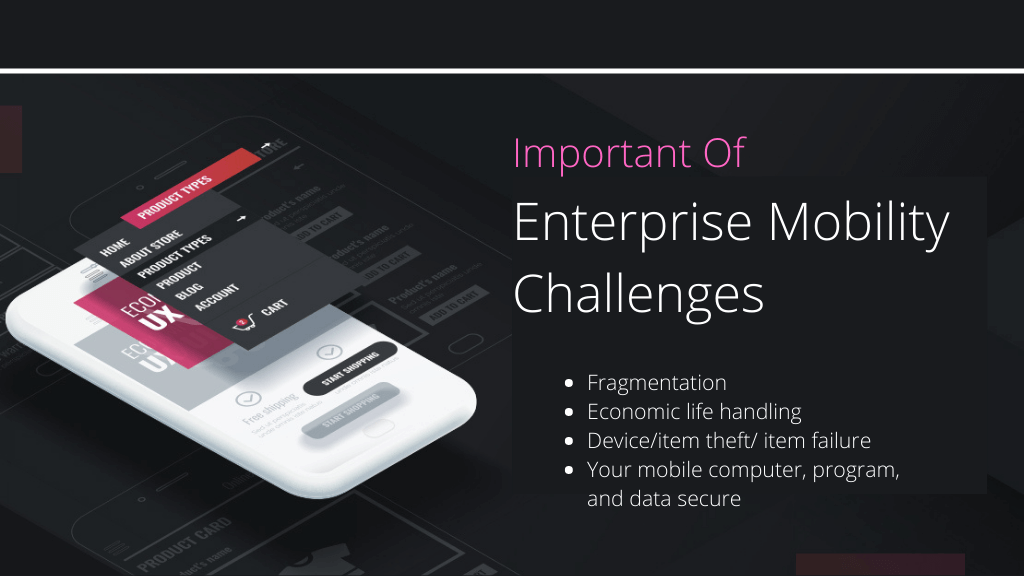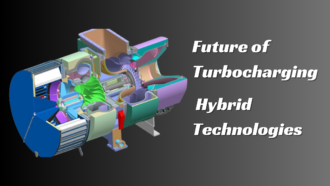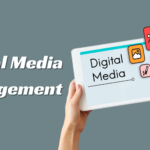Prime Enterprise Mobility Challenges in 2024
Mobility is no longer an unnecessary luxury today; it is imperative to almost any enterprise. In addition, employees look to maintain mobility and remain linked to benefit from increased efficiency, stability, and a leading company. The paradigm has shifted because of the digitalization of mobile IT; mobile IT has even made a business mobility administration transition (EMM). 2021 promises to be an exciting year for EMM and enterprise mobility overall. The following months give few terrifying expansions and, of course, difficulties.
Challenges and Difficulties associated with Enterprise Mobility Challenges
1. Fragmentation
Businesses that allow businesses to use their technology, such as smartphones and tablets, in the workplace are confronted with analogies that need bringing in. It is just a matter of time before employee demands expand to a point where it becomes unmanageable for IT to deal with employee bring-your-your-own-device use. Expanding the users’ rights has the users’ of making images adopt a popular interface and supporting a consistent, nt user experience is a considerable risk. As far as resolutions go, the company is the means to determine what can be achieved by the device and its applications. basing the work both on the action and on the circumstances is something used to handle the usage of the job (e.g. work scenarios) for improved efficacy
2. Economic life handling
The most significant issues of enterprise mobility deal with continuous app management, including the enterprise mobile app development, management, deployment, and update process of applications and devices. The expansive coverage of mobility services in this model will prove problematic, which may put an organization under great strain. There are different ways for a company to manage its lifecycle, from maintenance to decommissioning to provisioning, particularly when discussing devices. In other words, companies can oversee all the documentation, growth, and maintenance processes and maximise from and maximise the high number of enterprise mobility projects through which businesses would equip themselves with more software and services for any step of their lifecycle.
3. Device/item theft/ item failure
since the business versatility demands each worker to have their equipment, a company must have as many as the number of workers (perhaps even more. Imagine the amount of data that will be lost, whether one of the devices is missing or stolen. Since each storage device can range from 64GB to 128GB, the damaged or stolen computer incurs even further financial damage. Of course, the business’s protection can be guaranteed 100 per cent. It is outside the company’s influence; some can depend on conditions not explicitly identified. Even if they can avoid injury, the first time, businesses must implement procedures for damage management. Deploying tools and files to limit the negative consequences of a data breach to any extent is a valuable technique for minimizing loss and reclaiming data.
4. Your mobile computer, program, and data secure
Some believe protection has become more crucial as digital technology secures mobile devices and data. The organisation must stay on top of its controls to deter security risks, including ransomware, from breaching its infrastructure. SEM solutions can incorporate several management solutions, such as mobile device management, access control, mobile app managerial staff, and digital access control, to deal with their problems. Furthermore, it would be best to impose restrictions on public wireless connections for enterprise-oriented computers, such as prohibiting them from being used for business reasons and encouraging backup data.
Due to the rapid shifts in mobile apps, EMM must adopt the platform below. An EMM solution should not only maintain the products that are already in use but also ensure that it can manage the introduction of new models. The three parts include integrated peripherals, the information store, data and application catalogue, accessible via an integrated network, and simplified information and function expansion mechanisms, which are relevant for mobile environments, easily transported, and available on an EMM platform.
- The framework, which enables the implementation of multiple functioning systems, is relatively simple to incorporate the current architecture and changes over time.
- Larger size: An easy-to-use console that spans computers and has always supported you on-site, providing a provider. Administrators in the enterprise can be kept busy for as little as possible, thus providing them with an easy-to-use user interface in which strong encryption is used on all kinds of mobile devices, such as iPods, Android smartphones, etc., to protect the files.
- iDevice protection, asset use policies, and user management should be implemented at the corporate level to ensure data security, restrict access to business information, and control application bandwidth.

















